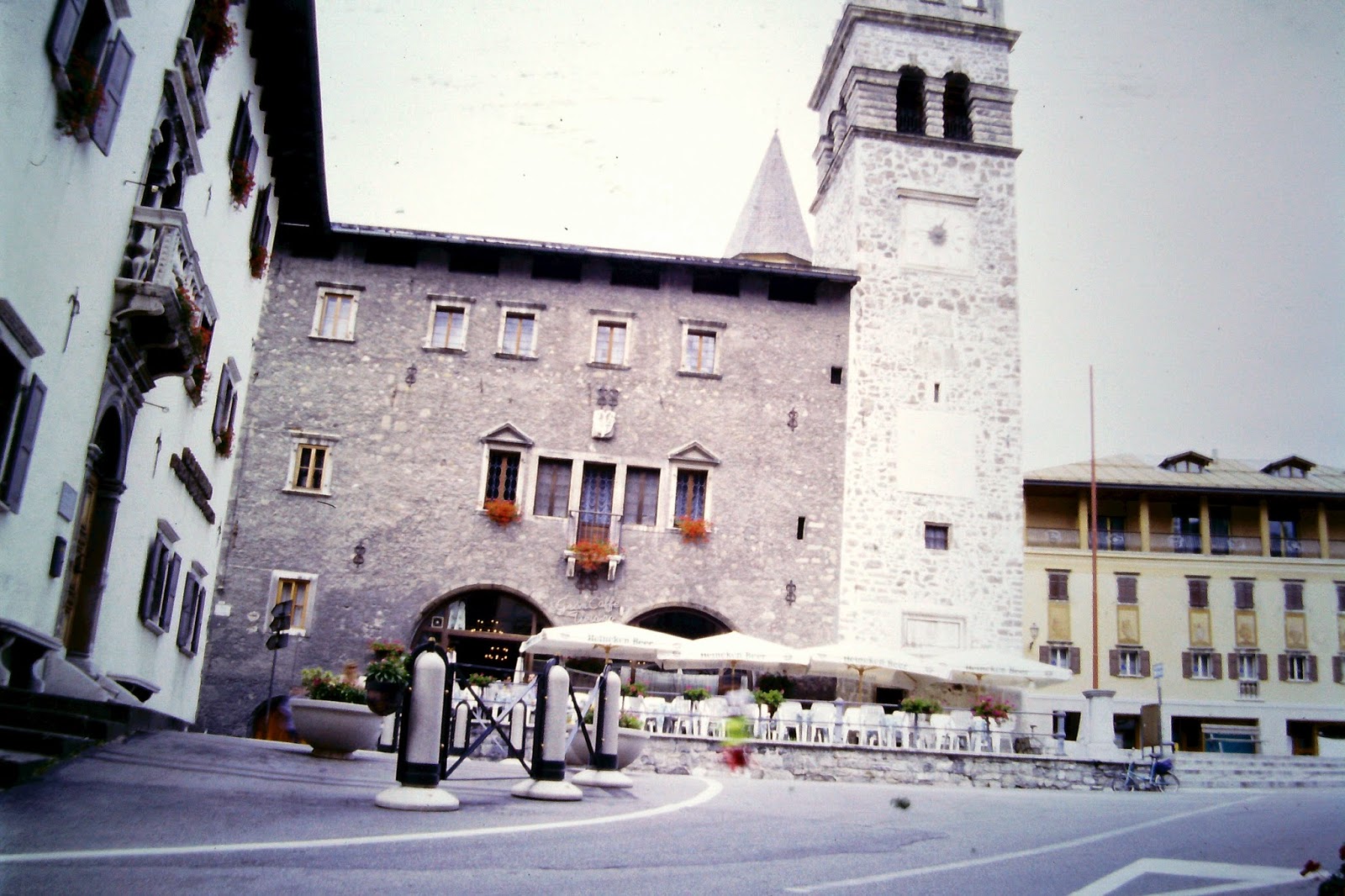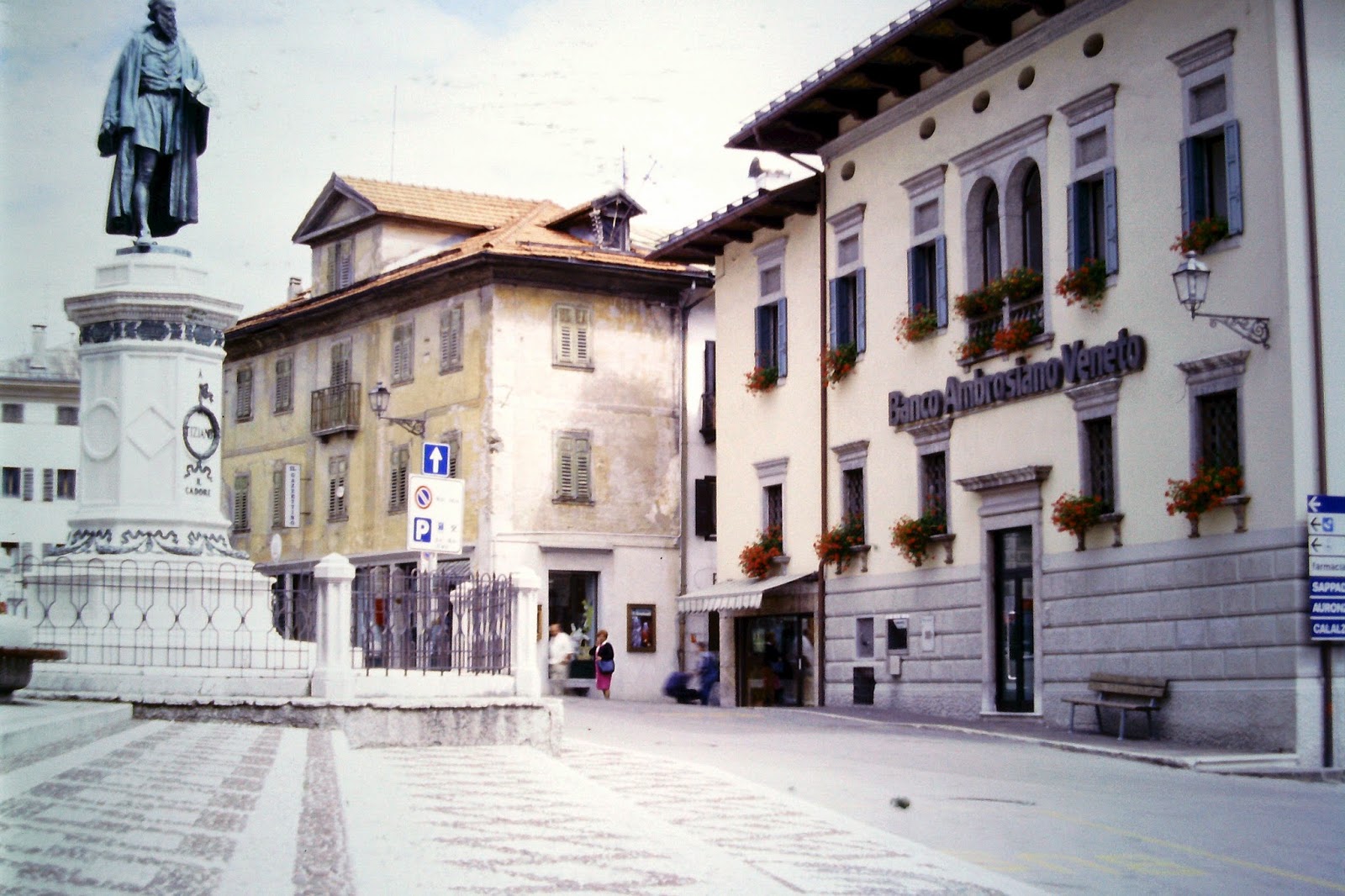
The morning bus from Cima Sappada took Una and myself back to Calalzo station. Bus journeys in Italy are much more fun than those in the UK. The passengers like to enjoy an exchange of banter with the driver, which makes for fine entertainment and passes the time amicably.
 |
| Fancy befriending an Italian bus? |
The route down the Piave valley took us through many picturesque little alpine villages.
Glancing through the window of the bus after we passed through San Stefano I saw that the Piave had become a wider river, having joined with the waters of the Pàdola Torrente.
But the biggest transformation was at Tre Ponti. At Tre Ponti the Piave merges with the Ansiei River. This photo from the nineteenth century shows what the famous junction of three bridges looked like in those times.
Progressively, from the nineteenth century onward, the wooden bridges in Cadore were replaced by stone ones.
 |
Santa Orsola Chapel © Peter Alexander Gray 2012
|
Perched on the hillside to the east of Tre Ponti is Vigo di Cadore, with the beautiful little chapel of Santa Orsola. I had to wait until 2012 before making a visit there. I am indebted to Umberto Olivier and Giancarlo Soravia.
The walls inside the chapel are richly decorated with frescos. They tell the story of Santa Orsola's doomed pilgrimage, which ended in the massacre of herself and 11,000 other virgins by the forces of Attila the Hun.
 |
| Inside the Santa Orsola Chapel © Peter Alexander Gray 2012 |
When the bus arrived at Calalzo station it was time to take Una out of the bag once more, assemble her from her component parts, and head downriver to Pieve di Cadore. By the time we arrived in Pieve, I was thirsty.
The main square is dominated by a statue of Pieve's most famous son Tiziano (that's Titian to English-speakers like myself), but puffing up the hill towards the piazza I found my attention drawn instead to a curious building, which appeared to be a church with a built-in bar.
 |
| An unusual bar... © Peter Alexander Gray 1998 |
 |
| A most relaxing place... © Peter Alexander Gray 1998 |
 |
| © Peter Alexander Gray 1998 |
But then... what lovely old houses frame the square.
In the centre of the piazza Tiziano (my diary says 'wearing tights and funny shoes') looks down suspiciously at the local bank.
Has anything changed?
The travel writer Alexander Robertson visited Pieve towards the end of the nineteenth century and wrote a book about his travels in Venetia, as Veneto was then, in 1896. He might well have stayed at the Hotel Progresso, here in the main square.
 |
| The Hotel Progresso in 1998 © Peter Alexander Gray 1998 |
The book has some interesting advertisements included at the rear.
 |
| The Hotel al Progresso's pitch for customers in 1896. |
 |
| Titian's house © Peter Alexander Gray 1998 |
The place everyone must see, of course, is Tiziano's birthplace (centre right). You can look inside here.
For Una and myself, it was time to head downriver once more to the place we most wanted to see - Perarolo.
Note: This blog supports readers of The Door of Perarolo, a historical novel set in Cadore, Italy in the early nineteenth century. You may examine feedback from readers in the UK here and in the US here. The Door of Perarolo is a Kindle ebook comprising 140 chapters. It can be downloaded from Amazon sites worldwide. The launch post of this blog gives further details. The second post provides links to maps, etc.



No comments:
Post a Comment